Filters
Mental Health Medicines
-
 Sale 40%
Original price $ 22.95Current price $ 13.75
Sale 40%
Original price $ 22.95Current price $ 13.75Bupropion Hydrochloride 150 mg Extended-Release Tablets USP (XL) 30 Count (RX)
Lupin PharmaNo reviewsBupropion Hydrochloride 150 mg Extended-Release Tablets USP (XL) by Lupin Pharma are a trusted choice for managing major depressive disorder (MDD) ...
View full details🔒 Medical License Required -
 Sale 38%
Original price $ 15.95Current price $ 9.95
Sale 38%
Original price $ 15.95Current price $ 9.95Escitalopram Oxalate Tablets 20 mg by Solco, 100 Count (RX)
Solco HealthcareNo reviewsEscitalopram Oxalate Tablets 20 mg by Solco Healthcare is a highly effective selective serotonin reuptake inhibitor (SSRI) indicated for the treatm...
View full details🔒 Medical License Required -
 Sale 39%
Original price $ 11.95Current price $ 7.25
Sale 39%
Original price $ 11.95Current price $ 7.25Quetiapine Fumarate 50 mg Tablets by Ascend Labs 100/Bottle (RX)
Ascend LaboratoriesNo reviewsQuetiapine Fumarate 50 mg is a medication used to treat schizophrenia, bipolar disorder, and major depressive disorder. It is an antipsychotic medi...
View full details🔒 Medical License Required -
 Sale 29%
Original price $ 6.95Current price $ 4.95
Sale 29%
Original price $ 6.95Current price $ 4.95Haloperidol Injection 5 mg/mL Single Dose Vials for Intramuscular Use EACH (RX)
Mylan PharmaceuticalsNo reviewsRapid, Reliable Control of Acute Agitation, Psychosis & Severe Behavioral Disturbances Haloperidol Injection 5 mg/mL by Mylan Pharmaceuticals i...
View full details🔒 Medical License Required -
 Sale 20%
Original price $ 75.00Current price $ 59.95
Sale 20%
Original price $ 75.00Current price $ 59.95Prochlorperazine Edisylate Injection 5 mg per mL Multiple-Dose Vials 2 mL x 10/Pack (RX)
Caplin Steriles USANo reviewsProchlorperazine Edisylate Injection is a sterile, injectable medication used to manage severe nausea and vomiting, as well as for the treatment of...
View full details🔒 Medical License Required -
 Sale 38%
Original price $ 34.59Current price $ 21.60
Sale 38%
Original price $ 34.59Current price $ 21.60Propranolol Hydrochloride Tablets 60 mg, 100 Count (RX)
Amneal PharmaceuticalsNo reviewsComprehensive Cardiac, Blood Pressure & Migraine Protection – Trusted Prescription-Strength Beta Blocker Take charge of your heart health, bloo...
View full details🔒 Medical License Required -
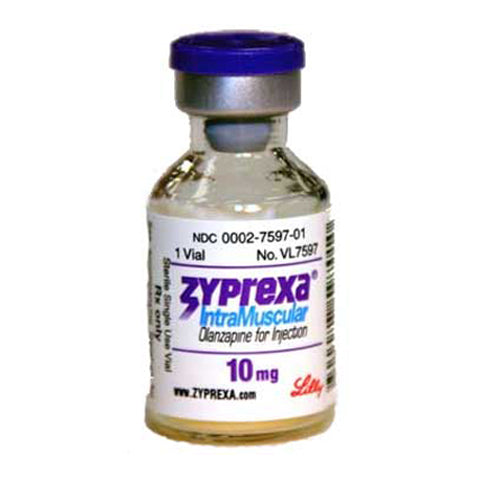 Sale 18%
Original price $ 94.95Current price $ 77.95
Sale 18%
Original price $ 94.95Current price $ 77.95Zyprexa Olanzapine for Injection 10 mg Vial (Rx)
LillyNo reviewsZyprexa Olanzapine for Injection 10 mg is a prescription medication used to treat acute agitation in patients with schizophrenia and bipolar disord...
View full details🔒 Medical License Required -
 Sale 32%
Original price $ 72.00Current price $ 48.95
Sale 32%
Original price $ 72.00Current price $ 48.95Prochlorperazine Maleate Tablets 5 mg Ajanta Pharma 100 Count (RX)
Ajanta PharmaNo reviewsProchlorperazine Maleate Tablets 5 mg by Ajanta Pharma provide reliable, clinically proven relief for severe nausea and vomiting and are commonly p...
View full details🔒 Medical License Required -
 Sale 39%
Original price $ 15.95Current price $ 9.75
Sale 39%
Original price $ 15.95Current price $ 9.75Paroxetine 40 mg Tablets by Aurobindo 30 Count (RX)
Aurobindo Pharma USANo reviewsTop Choice for Major Depression, Anxiety, OCD, and Panic Disorder Relief – Trusted Generic of Paxil Take control of your mental health journey with...
View full details🔒 Medical License Required -
 Sale
from $ 105.00
Sale
from $ 105.00Trazodone Hydrochloride USP For Compounding (API)
Mountainside MedicalNo reviewsTrazodone Hydrochloride USP for Compounding (API) is an active pharmaceutical ingredient used to formulate customizable medications primarily for t...
View full details🔒 Medical License Required -
 Sale 40%
Original price $ 125.00Current price $ 75.00
Sale 40%
Original price $ 125.00Current price $ 75.00Olanzapine for Injection 10 mg Vial by Sandoz (RX)
SandozNo reviewsOlanzapine for Injection 10 mg is used to treat acute agitation associated with schizophrenia and bipolar disorder. It is given by injection to rap...
View full details🔒 Medical License Required -
 Sale 40%
Original price $ 54.75Current price $ 32.75
Sale 40%
Original price $ 54.75Current price $ 32.75Lithium Carbonate 300 mg Capsule 100 Count (RX)
HikmaNo reviewsLithium carbonate 300 mg is used to treat bipolar disorder, a mental disorder characterized by alternating periods of extreme mood swings, includin...
View full details🔒 Medical License Required -
 Sale 32%
Original price $ 39.95Current price $ 27.00
Sale 32%
Original price $ 39.95Current price $ 27.00Lithium Carbonate 150 mg Capsules 100 Count (RX)
HikmaNo reviewsSupport mental health with Lithium Carbonate 150 mg Capsules. Promote mood stability and balance for enhanced emotional and overall wellness. Lithi...
View full details🔒 Medical License Required -
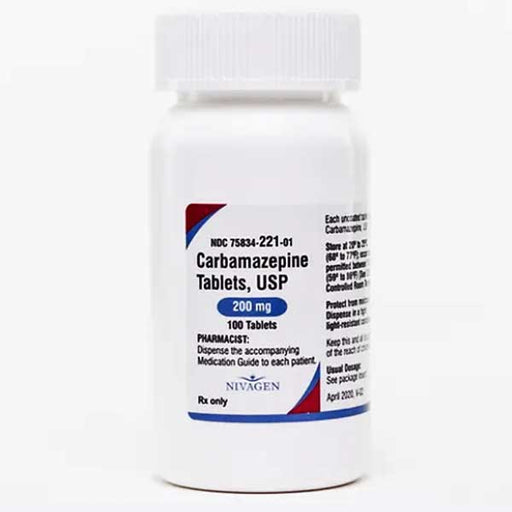 Sale 30%
Original price $ 49.95Current price $ 35.00
Sale 30%
Original price $ 49.95Current price $ 35.00Carbamazepine 200mg Tablets 100 Count by Nivagen Pharmaceuticals (RX)
Nivagen PharmaceuticalsNo reviewsCarbamazepine 200mg tablets are an anticonvulsant medication used to treat various types of seizures, including partial and generalized tonic-cloni...
View full details🔒 Medical License Required -
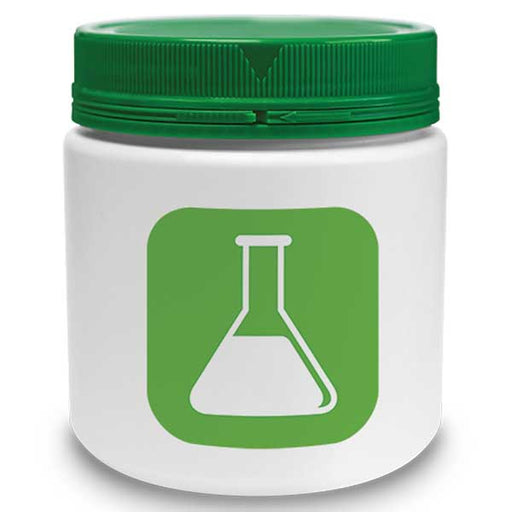 Sale
from $ 75.00
Sale
from $ 75.00Acetyl-L-carnitine Hydrochloride USP For Compounding (API) (Rx)
Mountainside MedicalNo reviewsAcetyl-L-carnitine Hydrochloride USP is an active pharmaceutical ingredient (API) that is used in the production of medications and dietary supplem...
View full details🔒 Medical License Required -
 Sale
$ 8.65
Sale
$ 8.65Vicks VapoShower Soothing Vapors Shower Tablets, 3 Tablets
Cardinal HealthNo reviewsTRANSFORM YOUR SHOWER. Specially formulated to soothe with non-medicated vapors and transform an everyday shower into the ultimate relaxing expe...
View full details -
 Sale 24%
Original price $ 19.95Current price $ 15.25
Sale 24%
Original price $ 19.95Current price $ 15.25St Johns Wort 300mg by Natures Bounty 100 Capsules
Nature's BountyNo reviewsSt. John's Wort is a medicinal herb commonly used for the treatment of mild to moderate depression. It contains compounds that may increase the lev...
View full details -
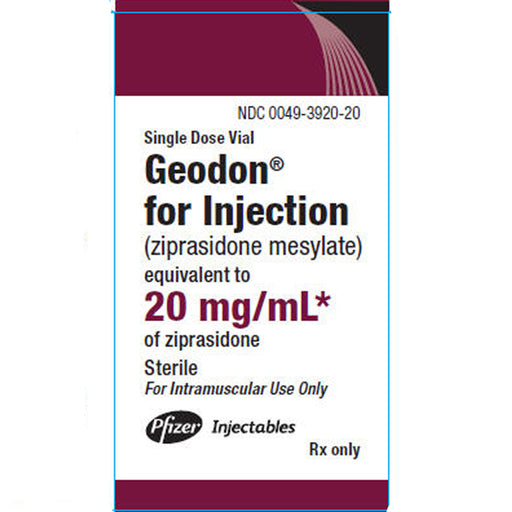 Sale 31%
Original price $ 1,295.95Current price $ 895.00
Sale 31%
Original price $ 1,295.95Current price $ 895.00Geodon for Injection (Ziprasidone) 20mg, 10/box (Rx)
Viatris SpecialtyNo reviewsRapid-Acting Antipsychotic for Acute Agitation and Schizophrenia Geodon for Injection (Ziprasidone) 20mg by Viatris Specialty offers powerful, rapi...
View full details🔒 Medical License Required -
 Sale 38%
Original price $ 15.95Current price $ 9.95
Sale 38%
Original price $ 15.95Current price $ 9.95Bupropion Hydrochloride 150 mg Extended- Release Tablets, 30 Count (RX)
ScieGen PharmaceuticalsNo reviewsExperience effective, once-daily depression treatment with Bupropion Hydrochloride 150 mg Extended-Release Tablets (XL), 30 Count by ScieGen Pharma...
View full details -
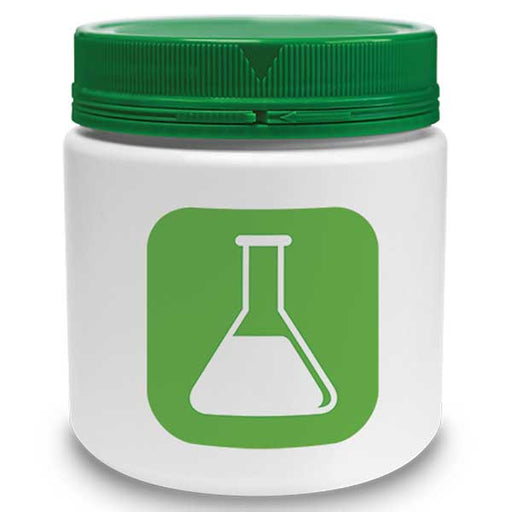 Sale
from $ 89.00
Sale
from $ 89.00Serine (L) USP For Compounding (API)
Mountainside MedicalNo reviewsL-Ornithine Hydrochloride USP For Compounding (API) is an essential amino acid used in formulating nutritional supplements aimed at enhancing metab...
View full details🔒 Medical License Required -
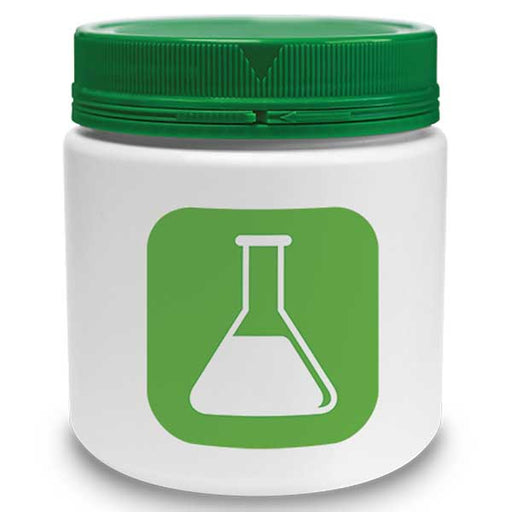 Sale
from $ 189.00
Sale
from $ 189.00Mirtazapine USP Powder API (Anhydrous) For Custom Compounding
Mountainside MedicalNo reviewsPharmaceutical-Grade Mirtazapine USP Powder API (Anhydrous) – Premium Quality Bulk Ingredient for Custom Pharmacy Compounding Elevate your custom p...
View full details🔒 Medical License Required -
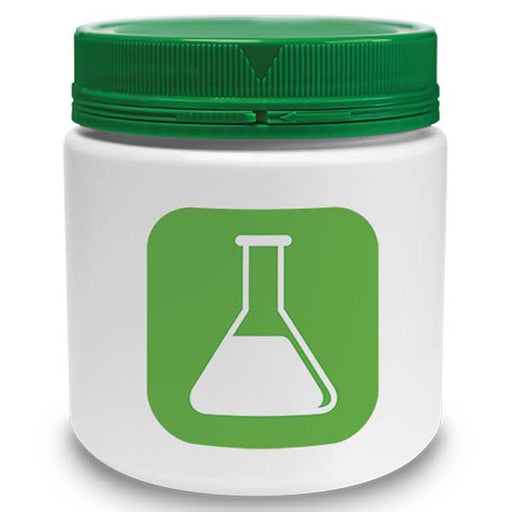 Sale
from $ 97.00
Sale
from $ 97.00Ergoloid Mesylates USP For Compounding (API)
Mountainside MedicalNo reviewsErgoloid Mesylates USP for Compounding (API) is an active pharmaceutical ingredient used in the preparation of custom medications, particularly in ...
View full details🔒 Medical License Required -
 Sale 35%
Original price $ 21.95Current price $ 14.25
Sale 35%
Original price $ 21.95Current price $ 14.25St. John's Wort 300mg Capsules, Promotes Positive Mood 100 Count
Nature's TruthNo reviewsNatural Mood Support, Stress Relief, and Emotional Wellness Supplement Boost your mental and emotional wellness naturally with St. John’s Wort 300m...
View full details -
 Sale 26%
Original price $ 54.00Current price $ 39.95
Sale 26%
Original price $ 54.00Current price $ 39.95Clonidine Transdermal System Patch, USP 0.1 mg/day (RX)
Dr Reddys LaboratoriesNo reviewsPurchase the Clonidine Transdermal Patch, USP 0.1 mg/day—a trusted prescription medication for effective, convenient management of high blood press...
View full details🔒 Medical License Required -
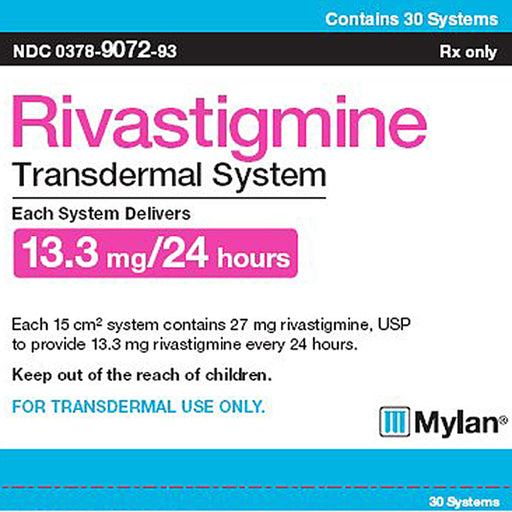 Sale 30%
Original price $ 199.95Current price $ 139.00
Sale 30%
Original price $ 199.95Current price $ 139.00Rivastigmine Patch 13.3mg 24-Hour Alzheimers & Dementia Symptom Treatment 30/Box
Mylan PharmaceuticalsNo reviewsRivastigmine transdermal patches are used to treat Alzheimer's disease and dementia (a brain disorder that affects the ability to remember, think c...
View full details🔒 Medical License Required -
 Sale 20%
Original price $ 345.00Current price $ 275.00
Sale 20%
Original price $ 345.00Current price $ 275.00Oxcarbazepine Oral Suspension 300 mg/5 mL (60 mg/mL) 250 mL
Amneal PharmaceuticalsNo reviewsOxcarbazepine is primarily used to treat seizures in individuals with epilepsy. It works by stabilizing electrical activity in the brain to help pr...
View full details🔒 Medical License Required -
 Sale 20%
Original price $ 235.95Current price $ 189.00
Sale 20%
Original price $ 235.95Current price $ 189.00Prochlorperazine Suppositories 25 mg, 12/Box (RX)
Cosette PharmaNo reviewsExperience effective relief from severe nausea and vomiting with Cosette Pharma's Prochlorperazine Suppositories, 25 mg. Specially formulated for p...
View full details🔒 Medical License Required -
 Sale 22%
Original price $ 14.95Current price $ 11.59
Sale 22%
Original price $ 14.95Current price $ 11.59St. John's Wort Extract 300mg by Nature's Blend, 60 Capsules
St. John's Wort ExtractNo reviewsSt. John's wort extract 300mg is a dietary supplement that is used to help with mood disorders, such as depression and anxiety. It is believed to w...
View full details -
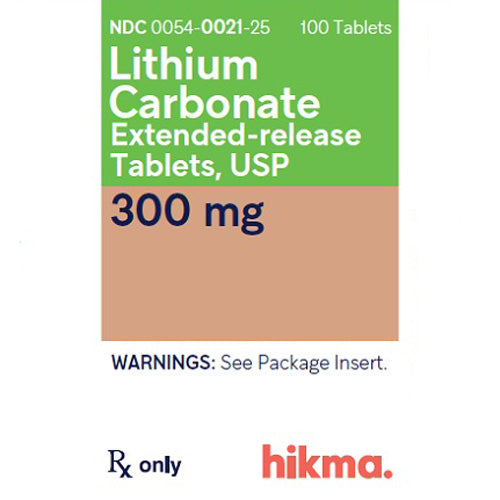 Sale 23%
Original price $ 25.95Current price $ 19.95
Sale 23%
Original price $ 25.95Current price $ 19.95Lithium Carbonate Extended-Release Tablets 300 mg Bottle of 100 Count (RX)
HikmaNo reviewsLithium carbonate is a medication used to treat and prevent episodes of mania (abnormally elevated mood) in people with bipolar disorder. It can al...
View full details🔒 Medical License Required -
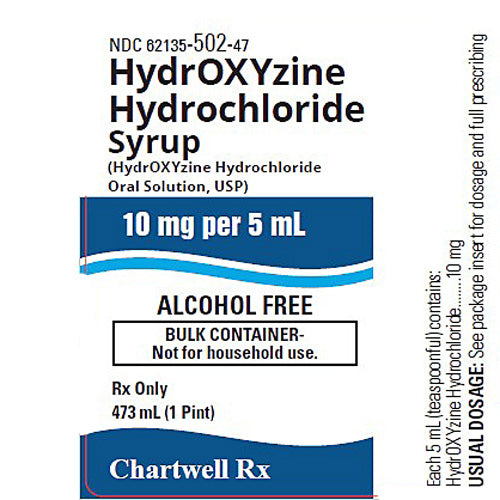 Sale 25%
Original price $ 1,150.00Current price $ 859.00
Sale 25%
Original price $ 1,150.00Current price $ 859.00Hydroxyzine HCL Syrup Oral Solution 10 mg/mL Alcohol Free 473 mL (RX)
Chartwell RXNo reviewsHydroxyzine HCL Syrup 10 mg/mL is an antihistamine used to treat allergy symptoms such as itching, sneezing, and runny nose. It is also effective i...
View full details🔒 Medical License Required -
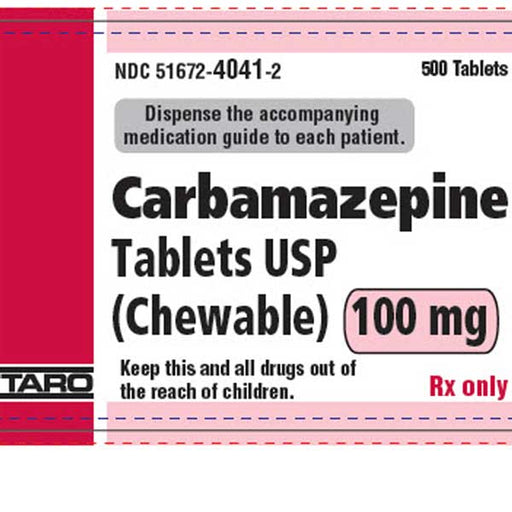 Sale 27%
Original price $ 55.00Current price $ 39.95
Sale 27%
Original price $ 55.00Current price $ 39.95Carbamazepine 100mg Chewable Tablets 100 Count (RX)
Taro PharmaceuticalsNo reviewsTaro Pharmaceuticals Carbamazepine 100mg Chewable Tablets are a medication used to treat certain types of seizures, such as partial seizures, gener...
View full details🔒 Medical License Required -
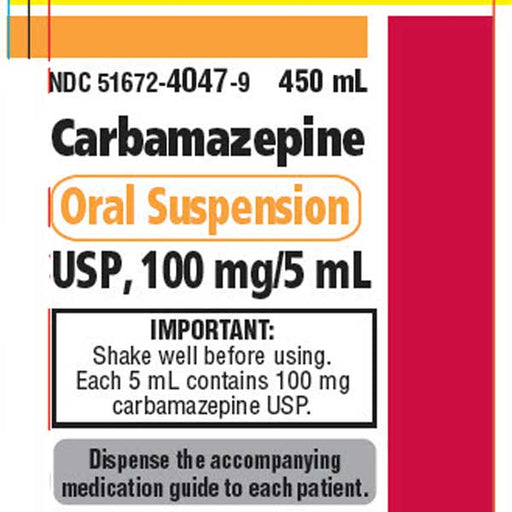 Sale 26%
Original price $ 169.95Current price $ 125.00
Sale 26%
Original price $ 169.95Current price $ 125.00Carbamazepine Oral Suspension USP, 100 mg/5 mL Liquid 450 mL (RX)
Taro PharmaceuticalsNo reviewsCarbamazepine Oral Suspension USP, 100 mg/5 mL, is used primarily to treat seizure disorders, including epilepsy, and to manage certain types of ne...
View full details🔒 Medical License Required -
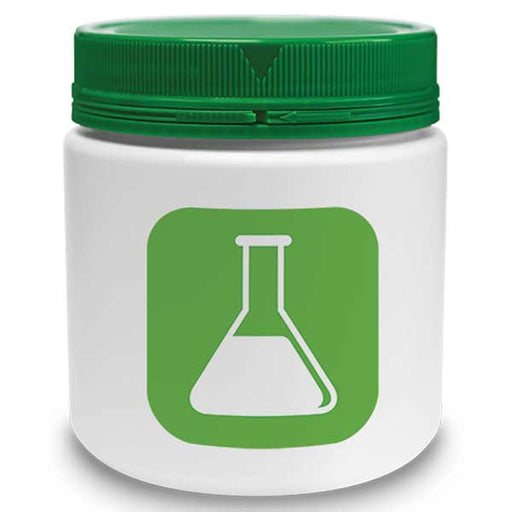 Sale
from $ 65.00
Sale
from $ 65.00Chlorpromazine Hydrochloride USP For Compounding (API)
Mountainside MedicalNo reviewsChlorpromazine hydrochloride USP is an active pharmaceutical ingredient (API) also known as a traditional antipsychotic medication. It is a derivat...
View full details🔒 Medical License Required -
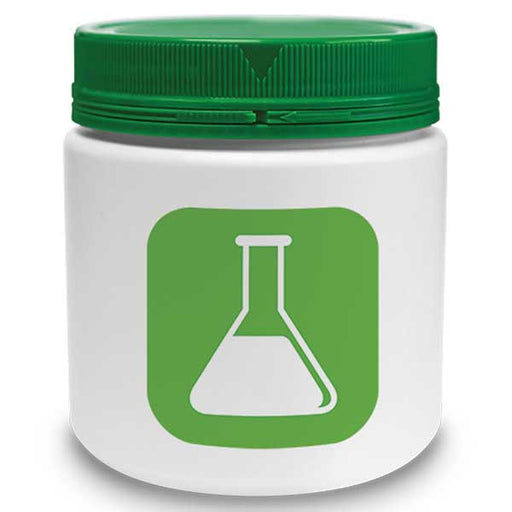 Sale
from $ 69.00
Sale
from $ 69.00Amitriptyline Hydrochloride USP For Compounding (API) (Rx)
Mountainside MedicalNo reviewsAmitriptyline Hydrochloride is a synthetic antidepressant drug belonging to the class of tricyclic antidepressants (TCAs). It is primarily used to ...
View full details🔒 Medical License Required -
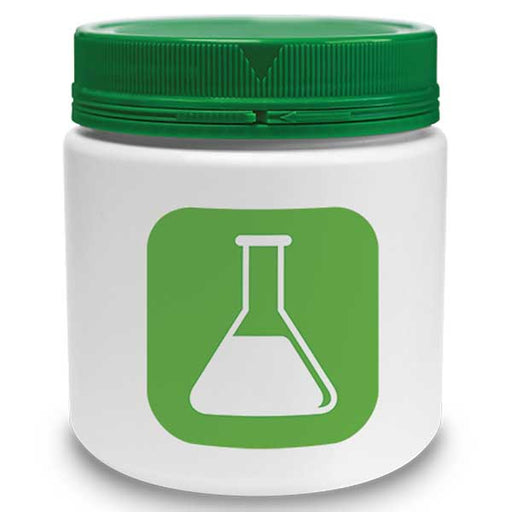 Sale
from $ 69.00
Sale
from $ 69.00Alpha-lipoic Acid USP For Compounding (API) [Dietary Supplement] (Rx)
Mountainside MedicalNo reviewsAlpha-lipoic acid USP active pharmaceutical ingredient (API) is a synthetic form of alpha-lipoic acid that is used in the production of pharmaceuti...
View full details🔒 Medical License Required -
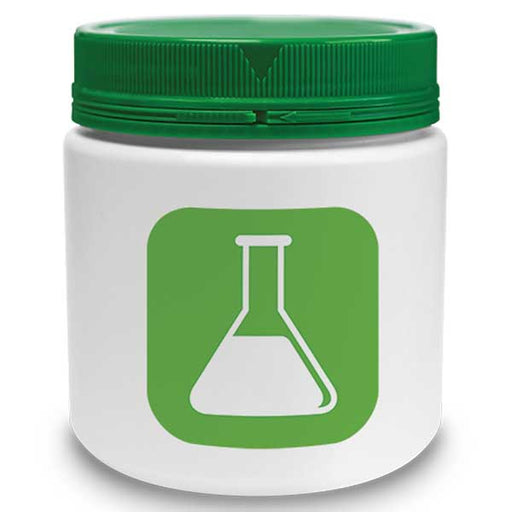 Sale
from $ 99.00
Sale
from $ 99.00Imipramine Hydrochloride USP For Compounding (API)
Mountainside MedicalNo reviewsImipramine Hydrochloride USP is an active pharmaceutical ingredient (API) used in the treatment of major depression, nocturnal enuresis (bedwetting...
View full details🔒 Medical License Required -
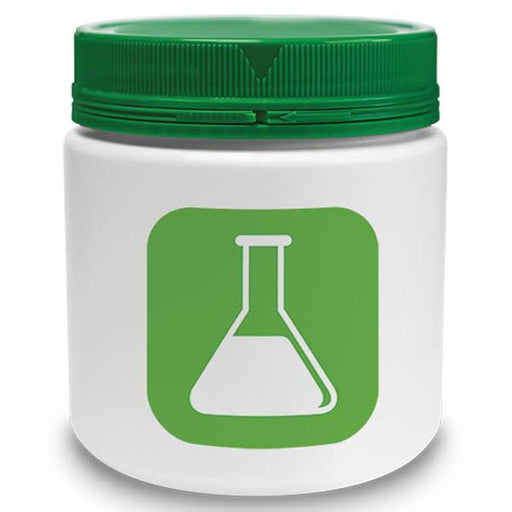 Sale
from $ 95.00
Sale
from $ 95.00Fluoxetine Hydrochloride USP For Compounding (API)
Mountainside MedicalNo reviewsFluoxetine Hydrochloride USP is an active pharmaceutical ingredient used in the compounding of medication. It is a selective serotonin reuptake inh...
View full details🔒 Medical License Required -
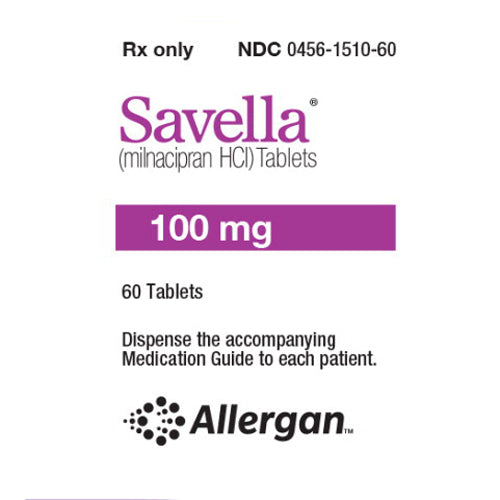 Sale 24%
Original price $ 799.95Current price $ 605.00
Sale 24%
Original price $ 799.95Current price $ 605.00Savella Tablets 100 mg, 60 Tablets
Allergan PharmaceuticalsNo reviewsSavella (Milnacipran) Tablets 100 mg is a Nerve Pain Medication and Antidepressant used for the management of fibromyagia. Savella (Milnacipran) i...
View full details🔒 Medical License Required






































